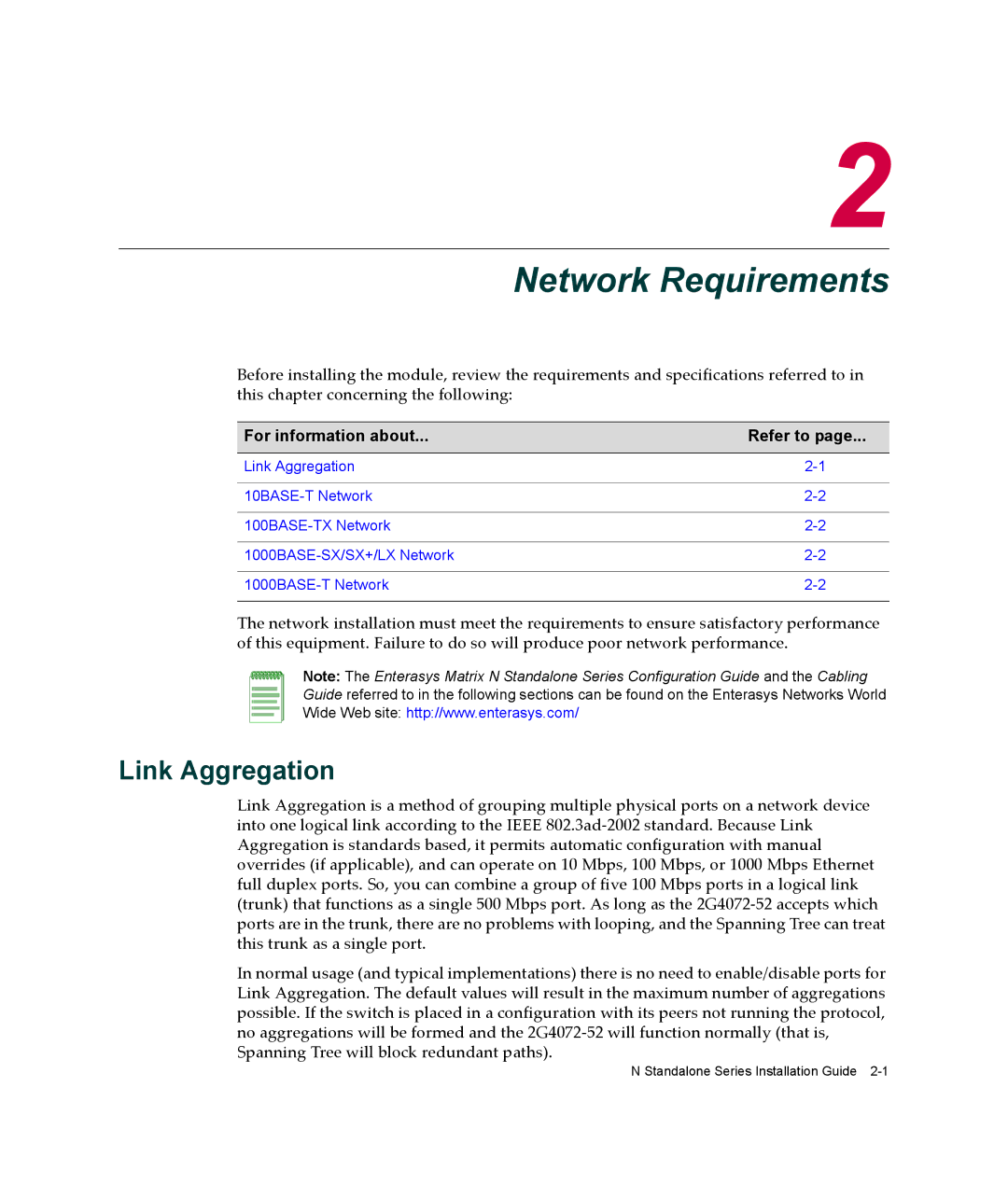
2
Network Requirements
Before installing the module, review the requirements and specifications referred to in this chapter concerning the following:
For information about... | Refer to page... |
|
|
Link Aggregation | |
|
|
|
|
|
|
|
|
|
|
The network installation must meet the requirements to ensure satisfactory performance of this equipment. Failure to do so will produce poor network performance.
Note: The Enterasys Matrix N Standalone Series Configuration Guide and the Cabling Guide referred to in the following sections can be found on the Enterasys Networks World Wide Web site: http://www.enterasys.com/
Link Aggregation
Link Aggregation is a method of grouping multiple physical ports on a network device into one logical link according to the IEEE 802.3ad‐2002 standard. Because Link Aggregation is standards based, it permits automatic configuration with manual overrides (if applicable), and can operate on 10 Mbps, 100 Mbps, or 1000 Mbps Ethernet full duplex ports. So, you can combine a group of five 100 Mbps ports in a logical link (trunk) that functions as a single 500 Mbps port. As long as the 2G4072‐52 accepts which ports are in the trunk, there are no problems with looping, and the Spanning Tree can treat this trunk as a single port.
In normal usage (and typical implementations) there is no need to enable/disable ports for Link Aggregation. The default values will result in the maximum number of aggregations possible. If the switch is placed in a configuration with its peers not running the protocol, no aggregations will be formed and the 2G4072‐52 will function normally (that is, Spanning Tree will block redundant paths).
N Standalone Series Installation Guide
